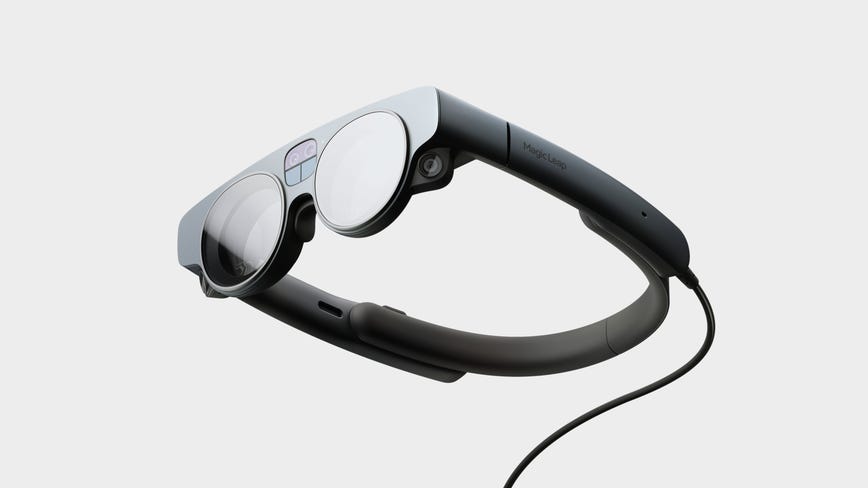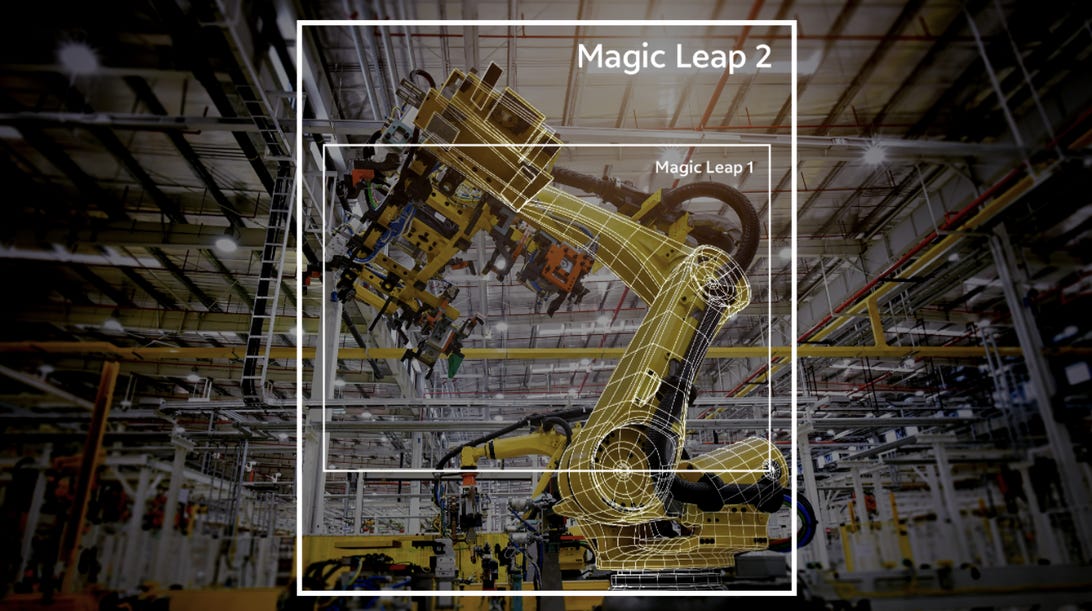Magic Leap planning new AR glasses for 2022, joining a crowded field

The Magic Leap 2 headset looks smaller but still also looks to be tethered to a processor to work.
Magic Leap
Magic Leap is still around, and the augmented-reality company is aiming a new headset at the business market to take on territory similar to Microsoft’s Hololens. Magic Leap CEO Peggy Johnson (formerly with Microsoft) revealed the new headset during a CNBC interview and in?a blog post on Monday. Johnson told news outlets earlier this year that a new headset would be announced by the end of 2021.
Magic Leap’s immediate goals for Magic Leap 2 are a wider field of view (the first version had a very limited viewing area in which AR graphics would appear), a smaller more glasses-like size, and dimming for use in bright outdoor conditions. First-gen AR headsets didn’t work very well in bright sunlight, although current AR headset efforts from Snapchat and Niantic (using Microsoft’s Hololens 2) are becoming more outdoor-focused. The goal for the headset looks to be designed for helping remote workers connect and train away from physical offices, much like what the Hololens 2 has been aiming for as well.?
Johnson also suggests that Magic Leap’s technology could end up being licensed for consumer products: “In fact, we have received several requests to license our technology and will actively pursue these opportunities if they enhance our position and ability to innovate in the enterprise market.”?

The field of view comparison between Magic Leap 1 and Magic Leap 2 looks significant, mostly vertical.
Magic Leap – Screenshot by Scott Stein/CNET
It’s been a number of years since we visited a comic book-colored Magic Leap headquarters and saw a promise of everyday AR glasses that didn’t exactly pan out. Magic Leap’s first headset was ambitious but clearly limited, and made sense for a much narrower audience than it originally aspired to. Whether the next version of Magic Leap can tap into enough software and services to make sense for businesses still remains to be seen.
There seem to be a lot of companies all trying to figure out how to make more glasses-based augmented reality headsets over the next few years, from Facebook?to Microsoft, to Qualcomm, to Snapchat, with others like Apple expected to join?the mix as well. We’ll be waiting to see how everything shakes out.